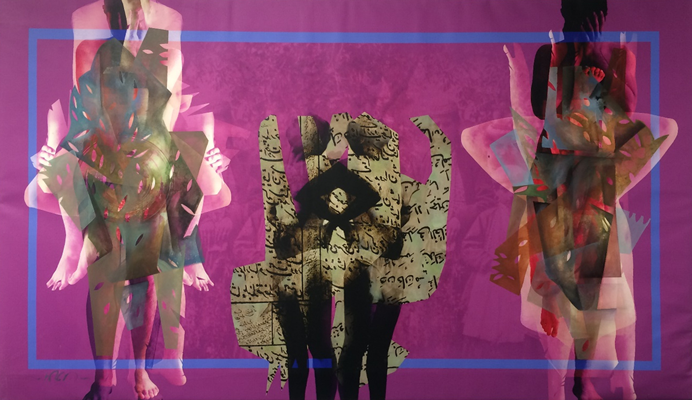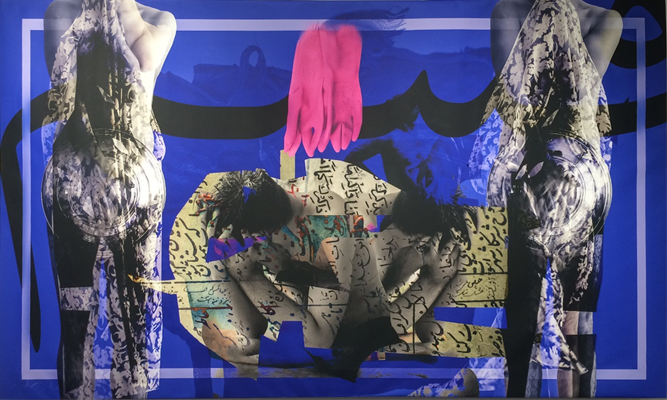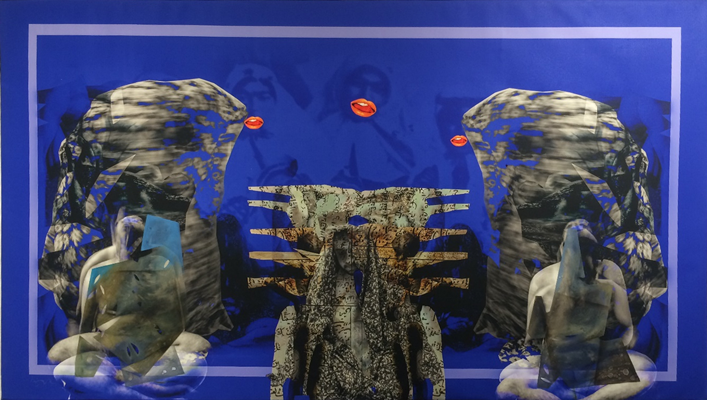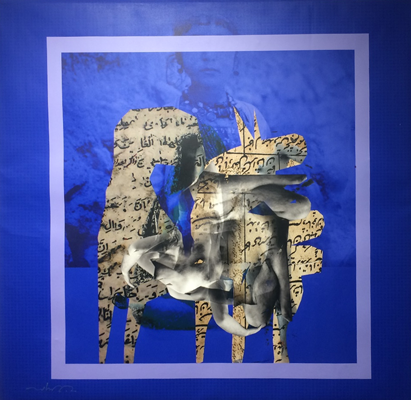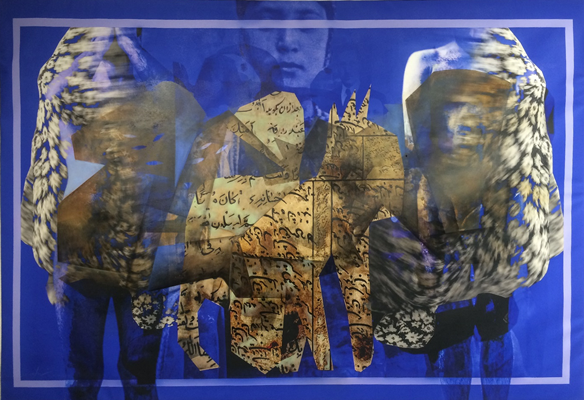hamoon alipoor: more bitter than blue
May 19 to June 22, 2018
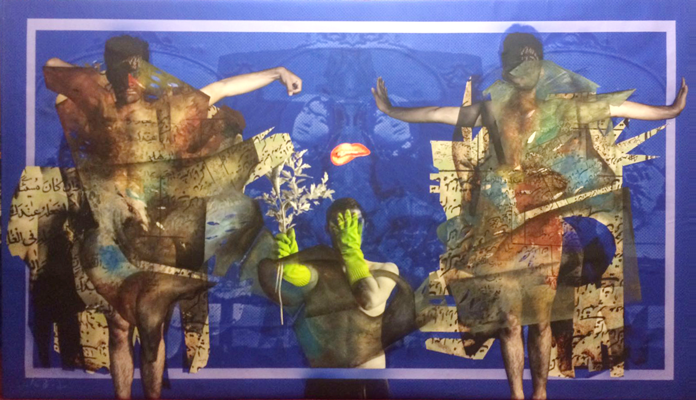 |
| Hamoon Alipoor, Don't Look at Me, Photomontage inkjet printed on canvas and acrylic paint, 79 1/2" x 47", $800 |
Hamoon Alipoor is an Iranian artist. Hamoon's art has crossed sanctions, bans, oceans and borders to arrive in the United States, yet he cannot travel here. His work deals with government oppression, human rights, immigration, regret and loneliness. The latter two a product of the former three.
Hamoon dwells on the "political and social evils" of the world. He believes that "limiting relationships between countries has created many problems" for him as a person as well as as an artist, and for our shared humanity. His work explores current events surrounding human rights—feminism, gay rights and immigration. He believes the past hundred years of constant change and critical art practices allow artists a free hand to communicate conflict.
His works include symbolic objects—vegetation symbolizing rebirth and regeneration; cleaning gloves being worn by a man traditionally worn by women; sacred writings offering mystery about origin and meaning; historical pictures suggesting the passage of time and our connection to self and humanity. His methods include socializing with a few close friends who inspire and energize him to complete his work, and confining his time to his studio and reading.
Special thanks to Masoud Assali and Kate Rainey for their diligent work on the Denied Project. They were instrumental in reaching out to Hamoon, and bringing his works to St. Louis.

